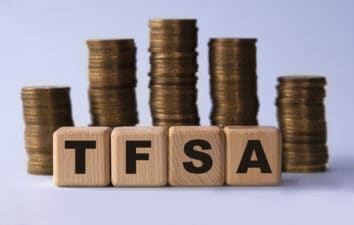Your CPP pension shouldn’t be seen as anything more than a small supplement to your self-constructed income stream. With the average monthly CPP payment pinned at less than $800, you can theoretically retire, but you sure as heck won’t retire comfortably.
If anything, the couple hundred bucks that you’ll receive per month (as of 2019, the maximum monthly amount for 65-year-old receipts is just $1,154.58 according to the Government of Canada) may be able to cover the groceries and a few bills, but it probably won’t be enough to cover your rent, especially if you live in the downtown core of a major Canadian city. Monthly CPP payments on their own also won’t be able to finance the vacations that you dreamed you’d be having after finally hanging up the skates on the workforce.
In a recent survey conducted by Sun Life Financial, approximately 23% of Canadian retirees describe their lifestyle as being “frugal.” Undoubtedly, a large chunk of this “frugal” 23% consists of those who are overly dependent on their CPP payments and need to dig into their savings to finance monthly living expenses.
By breaking open one’s nest egg and spending what’s been saved up over the course of a career, one runs the risk of outliving their money — a major fear most retirees share.
Nobody knows exactly how long they’ll live, and in an era where life expectancies are rising well beyond 80, retirees may find themselves living for three decades or more past the age of 65, so it’s vital only to spend dividends (or interest) and not the principal itself.
It’s up to individual retirees themselves to manage post-retirement risks effectively, so they’re not put in a scenario where their golden years end up being anything less than golden.
Assuming you’ve already saved up a nice nest egg for yourself, this piece will go into an attractively valued income stock that you pay monthly without causing your principal (your nest egg) to decay month after month until it withers away to nothing, effectively eliminating (or at least dampening) your risk of running out of money.
With such dividend stocks (preferably in your TFSA to avoid taxation on your monthly distributions), your nest egg will take you as far as you need to go if you spend the dividends and not the principal itself.
Consider Shaw Communications (TSX:SJR.B)(NYSE:SJR) — a telecom titan with a 4.4% dividend yield and industry tailwinds over its bigger brothers in the Canadian telecom scene.
Although two of the three Big Three telecoms sport higher yields than Shaw, none of them, I believe, are capable of the magnitude of growth that Shaw will be able to support over the next decade.
Shaw has been around the telephone, internet, and television space for quite some time now. But it’s a relatively new entrant into the Canadian wireless carrier scene with Freedom Mobile, Canada’s fourth major wireless player, that’s going after the subscribers of its peers.
To make the Shaw disruption story even more encouraging is the fact that the firm will likely be granted “unfair” advantages by the federal regulators who are looking to foster competition to drive wireless rates lower for Canadians.
With the 5G arms race on the horizon, Shaw’s wireless business has the most room to run. And with relentless price undercutting and promos to be expected, loyalty to telecoms will soon be dead if it isn’t already. And as Freedom Mobile looks to capture an equal 25% chunk of the Canadian wireless pie, I see substantial dividend growth and capital gains at the expense of its peers.
A 4.4% yield on its own is attractive. Add the attractive valuation (19.5 times next year’s expected earnings), the stock’s lower degree of volatility (0.76 beta), and the encouraging growth runway into the equation, and you’ve got a stock that’s a gift that’ll keep on giving — precisely the type of investment you want if you’re worried about running out of money.
Stay hungry. Stay Foolish.








